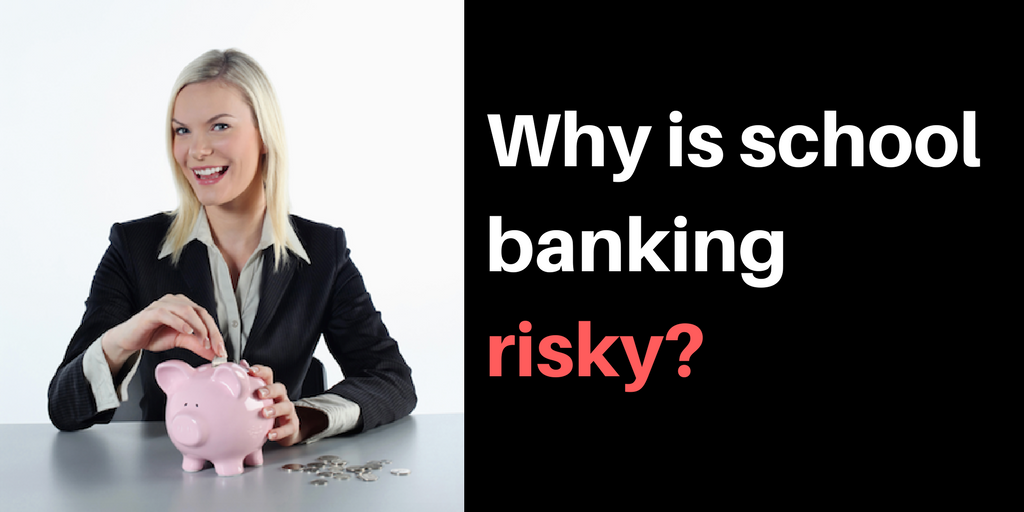Parents and educators:
- Would you let McDonald’s teach your children about nutrition?
- Would you let Monsanto teach your kids about farming?
- Would you let Rolf Harris teach your children about consent?
Of course you wouldn’t. You may even be aghast that I suggest such a thing.
…but what if McDonald’s paid you a commission on each item sold in the school canteen?
…or if Monsanto offered to sponsor a school garden and supply all the equipment and seeds?
…or if Rolf agreed to be publicly flogged for fundraising on your behalf?
Not so easy now, right?
Ah, commissions. *Sigh*. They complicate everything.
Kick-backs 101
Imagine you’re on the P&C and someone offers to pay you $5 per child that signs up for their school banking program.
You do the mental maths: ‘500 kids in the school, if half of them sign up, we could get $1,250!’
Then they offer you $5 for each child that makes 10 deposits in a school year: ‘If we can get just 20% of the signed up students to do that, we’ll get another $250!’
Pretty soon it’s looking like one of your best fundraisers.
Not only will they give the kids awesome prizes, they offer to ‘teach your students about money’. Education AND commissions! Total no-brainer! This is AWESOME! It’s money for jam, and it’s good for the kids!
Or is it?

Saving isn’t the only lesson they’ll get…
Dancing with the devil
Perhaps you do a bit of due diligence on the company making the offer.
You find:
- They’re publicly listed, so they are driven to create shareholder value and return dividends.
- To do this, they sell debt – in most of its glorious and dubious forms including credit cards.
- They also promote saving, but they’ve got an (unpublicized) ulterior motive: they can loan $10 for every $1 you save to someone else and charge them interest.
- They are currently involved in a Royal Commission into misconduct in their company, following a Senate Inquiry to the dodgy advice they gave paying customers.
Having second thoughts yet?
I’ve just described Australia’s Big 4 banks. The same banks you let into your school and into your child’s hearts and brains, whether you realise it or not.
This is why school banking is risky.
Eyes wide open
School banking programs are an absolute bargain – for banks.
They pay a measly sum to get your child as a customer. $5 is nothing – businesses like theirs pay hundreds of dollars to just get leads, let alone sign people up!
In exchange for their $5, they get the name, birthdate and the postal address of your beloved little Johnny or Jane, which you obligingly keep updated so you can receive statements from them. This means they know when the kid is turning 18 and can make a well-timed credit card offer as a coming-of-age present.
In turn, you’re helping them build a brand loyalty in the kids that withstands all attempts to dislodge it with education and reason. Which means that when that credit card offer arrives in the post when they turn 18, there’s a strong chance your little darling will sign up.
Which is part of the reason we’ve got such an enormous household debt problem in Australia.
But at least you got that $1,500 for the P&C, right?
Making the most of school banking
I’m not here to bash schools or P&Cs for having school banking.
I understand the struggle to balance sources of cash in an environment of ever-depleting government support with constrained volunteer time, all while trying to achieve good outcomes for our mini-me’s.
This post is deliberately confrontational – though not exaggerated – so you might be shocked into paying attention. Even well respected fundraising experts don’t see what the fuss is about, which tells me they don’t yet understand what’s going on.
School banking CAN be win-win, but only if you go into it with your eyes open and mitigate the risks.
Here’s my tips to counteract the potential for poor outcomes for our kids, however unintended.
1. Ask for more
$5 is an absolute pittance. Big businesses are used to paying 20 times that amount to acquire a customer. Go back to them with a counter-offer, or ask them to also contribute a few extra thousand to a project you want to pursue. Make them work for it. Shop around and play them off against each other.
(If we all did this, it would only be a matter of time till they succumbed. This program is essential for maintaining market share – they need us way more than we need them! The world continues to run without banks).
2. Use more than one bank
Do not sign anything that requires exclusivity.
Approach multiple banks for multiple fundraisers, so you at least get your kids familiar with the idea that there is more than one brand to choose from, and that it’s good to shop around.
3. Provide independent education
If you wanted to know whether you should vote for Liberal or Labor, would you ask Malcolm Turnbull or Bill Shorten for their opinions?
Would it be in Malcolm’s interest to say ‘Labor has better policies, vote for them’? Or vice versa?
Nope.
Neither is it in the interests of a bank to tell you not to take on debt. If it was, we wouldn’t have the highest level of household debt in the developed world.
Anyone who sells a financial product – banks, credit unions, superannuation companies, financial advisors, financial planners, property funds, mutual funds, trading platforms, brokers, etc etc etc – has a vested interest in your financial decisions. These people are not educators. They have no place in your child’s financial education.
Get independent financial education into your schools – be it MoneySmart, or us, or whatever the Barefoot Investor has cooking (which is why he wanted to buy us last year – financial education for kids is next on his to-do list since MoneySmart’s uptake has been abysmal).
Counteract the bank brainwashing with a reality check, and make sure it happens in tandem.
4. Make an example of them
When it’s time to do your persuasive marketing module, choose the school banking program to analyse. Examine why they’d name their cartoon character promoting the program ‘Cred’ (why not ‘Debt’ instead?)

“They named him ‘Cred’? That’s genius marketing!”
If you’re looking at economics, teach them how banks work – loaning imaginary money (debt they issue), being paid back in real money (our income), and able to do so because they hold real money (our savings) as security against the imaginary money. What an awesome business model!
Do the calculations for compound interest on a credit card in mathematics.
When you’re talking about legislation and how parliament functions, include the recent Senate Inquiry and Royal Commission in the discussion.
When you’re talking about news and how it’s reported, use an article like “‘It can destroy you’: Bank victims hope royal commission will bring justice” as a case study.
Got another idea?
Are you a teacher, parent or P&C member who has done something creative with their school banking program to counteract the risks of having it? Please share your suggestions in the comments – the more, the merrier!
What comes next?
Download our Free Financial Resources
Find the right Money School Course for you
Get the Book: Money School, Become Financially Independent and Reclaim Your Life, Lacey Filipich
Got a question: Contact Us
Lacey Filipich is the co-founder and director of Money School. She helps parents raise financially savvy kids and helps adults get on top of their finances. Connect with her on LinkedIn and follow the Money School Facebook page to learn more.

